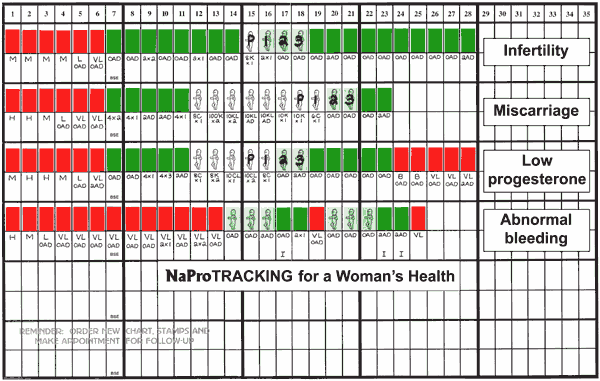The fundamental principles of the CrMS have been known to physicians for many years and well documented, although as Cohen, et. al., observed: “They have been almost disregarded by gynecologists.” In 1952, this group published a schemata of the events that occur relative to the changes in the cervical mucus as ovulation approaches. In retrospect, this schemata also defined the basic principles of the not yet described Billings Ovulation Method and the CrMS (See Figure 4-2).
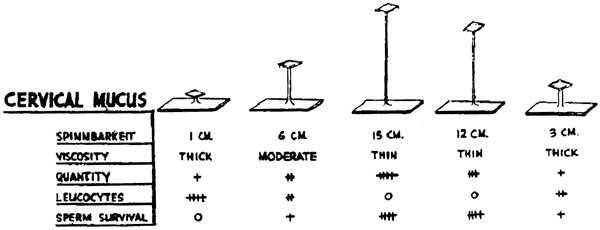
It was noted that as ovulation approached, the stretchability and clarity of the mucus increased along with its quantity of production. At the same time, the viscosity and its content of leukocytes decreased. The most pertinent observation, however, was the indication that the survival of the spermatozoa was directly related to the presence or the absence of an ovulatory or periovulatory type of mucus produced from the cervix.
In the CrMS, external observations of the vulvar area of the discharge of the cervical mucus, the presence of bleeding and the days when no discharge is present (dry days) are all used to obtain pertinent information on the phases of fertility and infertility and the state of the woman’s procreative and gynecologic health.
In a woman with regular cycles, the cycle begins with the onset of menstruation (see the first cycle of Figure 4-3). As menstruation tapers, there is generally no discharge and the woman observes this as dry. As ovulation approaches, there becomes apparent a cervical mucus discharge which often begins as a sticky, cloudy or tacky-cloudy discharge and eventually becomes clear, stretchy or lubricative. The last day of the mucus discharge, if it is clear, stretchy or lubricative, is identified as the Peak Day.
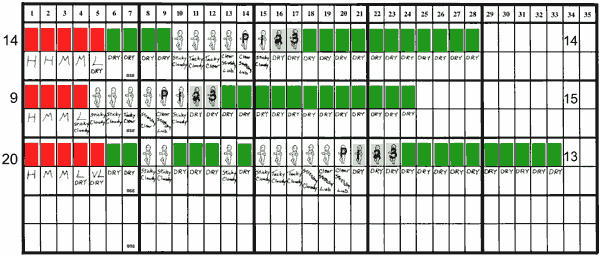
The presence of the cervical mucus discharge correlates well with the rising levels of estrogen (Figure 4-4) and the occurrence of the Peak Day is correlated well with the time of ovulation.
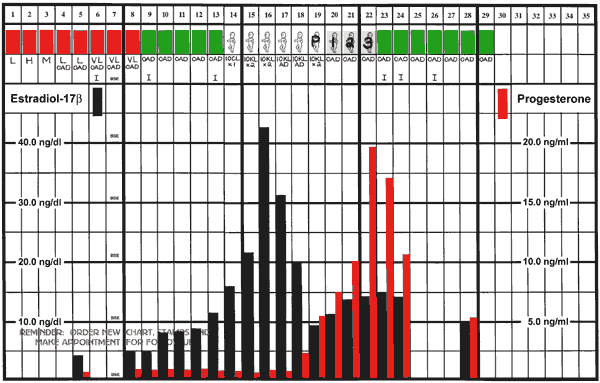
Because the production of the cervical mucus around the time of ovulation is an estrogen-dependent effect, and is produced at the time of the development of the follicle and approaching ovulation, when estrogen is increasing and ovulation approaching, the cervical mucus is produced and will be discharged before and during the time of ovulation. In long cycles (Figure 4-5) there may be occasional “patches” of mucus prior to the onset of the mucus associated with ovulation. What is prolonged in these cycles is the pre-Peak (or preovulatory) phase of the cycle and what remains relatively consistent, is the post-Peak (postovulatory) phase of the cycle.
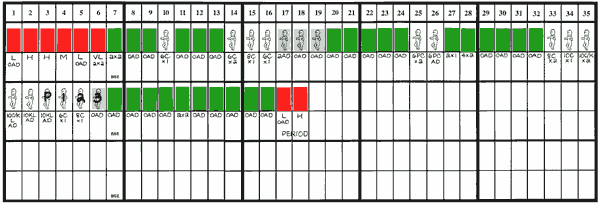
The same principles apply in anovulatory conditions such as breastfeeding (Figure 4-6). Feeding the infant from the breast may suppress ovulation and fertility for a number of days, weeks or months. The presence or absence of the characteristic cervical mucus discharge associated with ovulation is then delayed until fertility returns and predicts the onset of the first menstrual period.
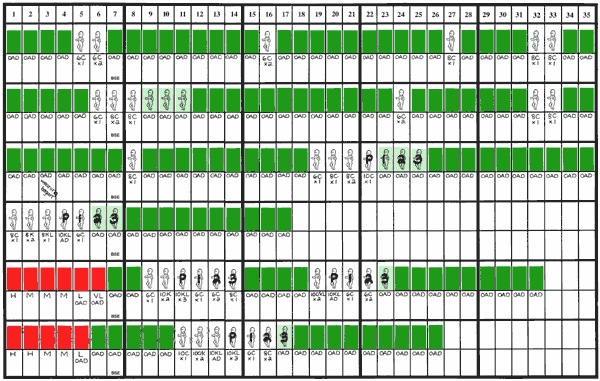
The versatility of the system, clearly one of its strongest features, is found in its fundamental biology. Because it relies on events leading up to ovulation, it defines the times of fertility and infertility in a definitive day-by-day, prospective fashion. Previously difficult cases, such as long and irregular cycles, breastfeeding, coming off of contraceptive pills, and ovulatory states in the premenopause, all can now be dealt with in a positive fashion without delay.
Even a woman with a continuous mucus discharge (Figures 4-7 and 4-8) can properly identify the days of fertility by using a base infertile pattern (BIP) which is identified with the presence of an unchanging discharge. When fertility begins, there will be a change in the pattern which is easily identified by the woman who has been properly instructed. Thus, fertility is identified. The BIP is charted with yellow stamps.


The CrMS is not a contraceptive system. It is a system of true family planning (See Figure 4-9). The information obtained for monitoring the phases of fertility and infertility can be used to either achieve or avoid pregnancy. Users of the CrMS know their fertility status on any particular day and are given the freedom to utilize that information as they so choose. Those who use a day of fertility to achieve a pregnancy are successful users and not failures. A pregnancy can legitimately be observed as a result of the system’s successful use.
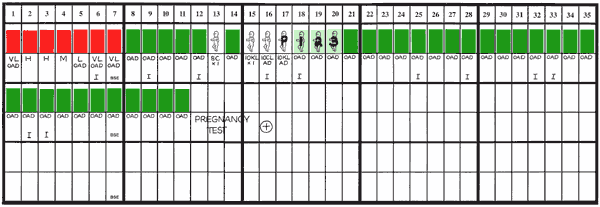
Because the CrMS is based upon biological markers that include not only the cervical mucus, but also the absence and the presence of various types of bleeding, it can be used as a means of monitoring and maintaining reproductive and gynecologic health. Investigation of this has given birth to the new women’s health science of NaProTECHNOLOGY. Most of the work that has been done in this area has been completed at the Pope Paul VI Institute for the Study of Human Reproduction in Omaha, Nebraska. This reflects the Institute’s background and experience in obstetrics and gynecology and in reproductive medicine and surgery. As this system has been used over the years, it has become an ideal tool for the gynecologist.
After many years of extensive evaluation, these biomarkers have been shown to reveal the presence or absence of certain types of pathologic or physiologic abnormalities. They give the physician and the patient a “handle” on the menstrual cycle and allow for its proper evaluation. It allows one to treat abnormalities of the menstrual cycle in cooperation with its function (Figure 2-6).
